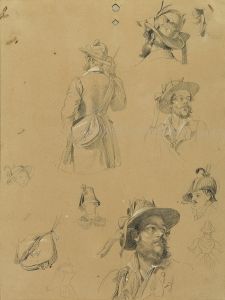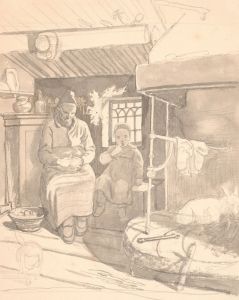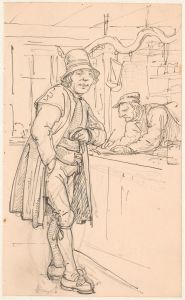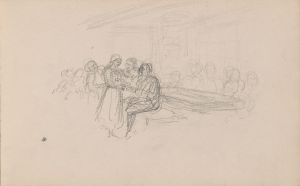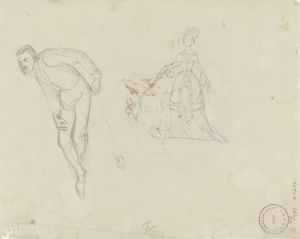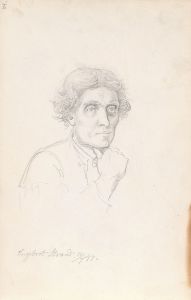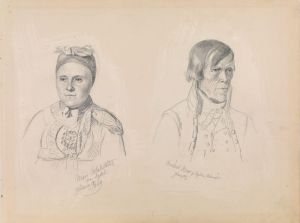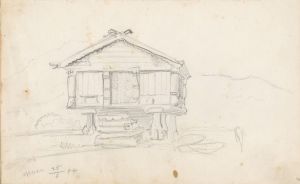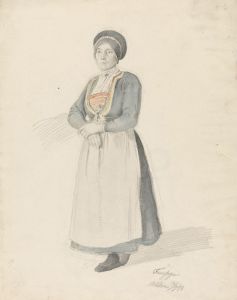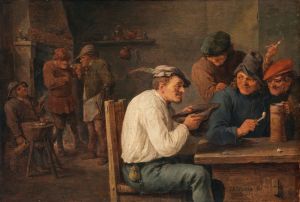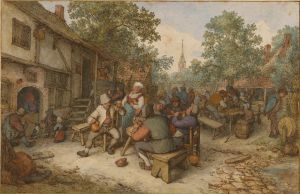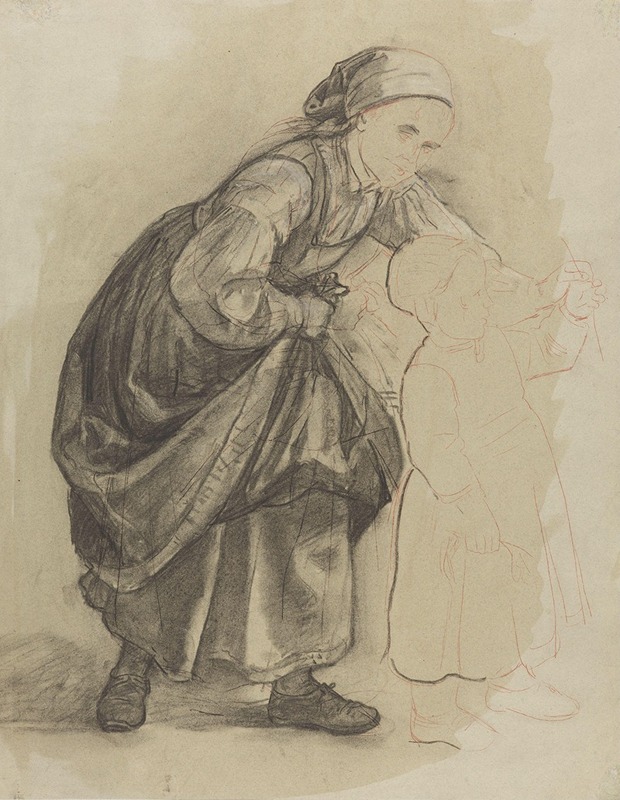
Bondekone og liten pike
A hand-painted replica of Adolph Tidemand’s masterpiece Bondekone og liten pike, meticulously crafted by professional artists to capture the true essence of the original. Each piece is created with museum-quality canvas and rare mineral pigments, carefully painted by experienced artists with delicate brushstrokes and rich, layered colors to perfectly recreate the texture of the original artwork. Unlike machine-printed reproductions, this hand-painted version brings the painting to life, infused with the artist’s emotions and skill in every stroke. Whether for personal collection or home decoration, it instantly elevates the artistic atmosphere of any space.
Adolph Tidemand was a prominent Norwegian painter in the 19th century, known for his detailed and realistic depictions of Norwegian folk life and traditions. One of his notable works is "Bondekone og liten pike," which translates to "Peasant Woman and Little Girl." This painting is a fine example of Tidemand's ability to capture the essence of rural Norwegian life during his time.
"Bondekone og liten pike" portrays a scene featuring a peasant woman and a young girl, presumably her daughter, engaged in a moment of daily life. The painting reflects Tidemand's interest in the everyday lives of Norwegian people, particularly those living in rural areas. His works often highlight the cultural and social aspects of 19th-century Norway, providing a window into the customs and traditions that were prevalent during that era.
Tidemand's style is characterized by its attention to detail and the realistic portrayal of his subjects. In "Bondekone og liten pike," this is evident in the careful rendering of the clothing worn by the figures, which is typical of Norwegian peasant attire of the period. The woman's dress and the girl's outfit are depicted with meticulous attention to the textures and patterns, showcasing Tidemand's skill in capturing the material culture of his subjects.
The setting of the painting is likely a rural Norwegian landscape, as suggested by the natural elements that can be observed in the background. Tidemand often incorporated elements of the Norwegian countryside into his works, emphasizing the close relationship between the people and their environment. This connection to the land is a recurring theme in Tidemand's paintings, reflecting the importance of agriculture and rural life in Norway during the 19th century.
Adolph Tidemand was part of the Düsseldorf School of painting, a group of artists who were known for their detailed and realistic style. His education and experiences in Düsseldorf greatly influenced his artistic development, allowing him to refine his technique and approach to painting. Tidemand's works, including "Bondekone og liten pike," are celebrated for their ethnographic value, as they document the traditional ways of life in Norway at a time when the country was undergoing significant social and economic changes.
Throughout his career, Tidemand collaborated with other artists, most notably Hans Gude, with whom he created several famous works. However, "Bondekone og liten pike" is a solo work that exemplifies Tidemand's individual artistic vision and his dedication to portraying the Norwegian people with dignity and respect.
Adolph Tidemand's contributions to Norwegian art are significant, and his works continue to be appreciated for their historical and cultural insights. "Bondekone og liten pike" remains an important piece within his oeuvre, illustrating his commitment to capturing the essence of Norwegian rural life and preserving it for future generations to appreciate.





